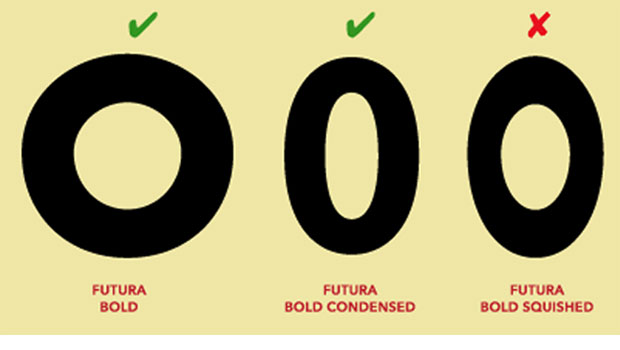TypeTalk: Why Distorting Type Is a Crime
Ilene Strizver explains why not to distort type and what to do instead.

Q. Why is stretching or squeezing type in headlines considered a type crime? I occasionally get this request from art directors, clients, and marketing. I know it’s considered wrong, but I don’t know how to reply to them.
A. Distorting type in any way, whether it be stretching, squeezing (AKA squishing), or slanting, is a type crime of the highest degree. It distorts the proportions in a way that destroys the integrity of the letter shapes. It can also reduce legibility by creating a fun-house effect.
You can see the effects of artificially condensing a typeface in the Futura example below. It has its own condensed version that maintains pleasing curves and the minimal stroke contrast of the regular version. The computer-scaled version to the far right fails miserably in comparison, with its ugly egg-shaped contours and exaggerated stroke contrast.

Check out the difference between Futura Oblique and the computer-generated slanted version below. The fake slanted version on the right has a more distorted shape, as well as uneven and exaggerated stroke contrast.

Finally, observe the unpleasant result of stretching Univers. The true-drawn extended version, second from the left, looks far better than the two examples of computer stretching on the right.

A way to avoid these requests for artificial distortions is to pick a typeface or type family that contains legitimate, true-drawn width variants. When created by a skillful type designer, a width variant maintains the weight contrast between thick and thins; the relationships of the horizontals and verticals; the axis of the character stress of italics (when applicable); the thickness and integrity of the serifs, if any; the overall width of character; and the spacing.
Don’t give in to these requests to “set to fit” or fill in white space! Instead, work with the chosen typefaces and other elements to make a successful composition and overall design.
This article was last modified on February 21, 2025
This article was first published on July 29, 2010



